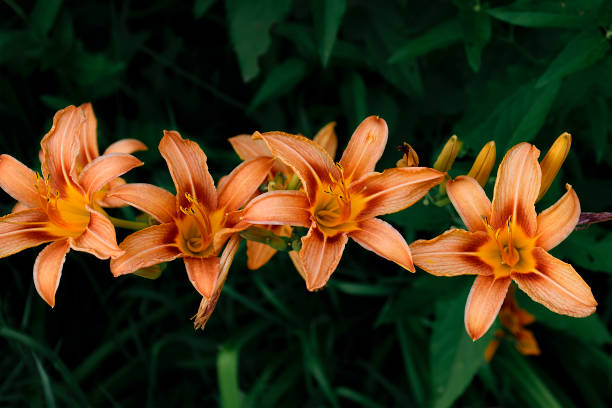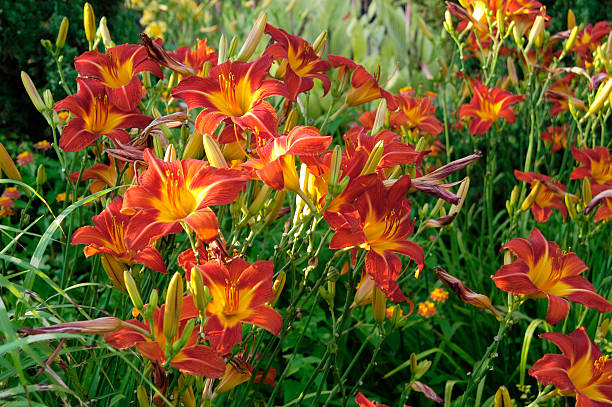When To Plant Daylily Bulbs?
Daylilies with bare roots can be planted in the spring or fall. It is preferable to plant daylilies in the spring rather than the summer in colder climates. They will get more chances to build roots if planted in the spring rather than the fall.
When planting them in the fall, it is important to ensure that bare-root daylilies are in the ground at least six weeks before the ground freezes for the winter. Start planting in areas where the ground doesn’t freeze during the spring or fall and winter months.
Keep the daylily roots in their previous bags at 5°C for no more than three weeks if you don’t have time to plant immediately. It can be done in a refrigerator’s vegetable drawer.
However, the best results will be achieved by planting quickly. The best time to plant late-summer daylilies for fall is right before the first fall frost. The best time to plant daylilies for spring is April’s first and second week.
If you bought daylily online, the shipment might have prompted the daylilies to grow. It is natural and will not harm your plants in any way. You should immediately cut the shoots back to about 1-2″ after unpacking if this has happened.
If the roots appear dry when they arrive, don’t be alarmed. Soak the roots for about 30 minutes in the cold to lukewarm water before planting. Daylilies planted in the fall will begin to grow new roots right away.

Table of Contents
Where To Plant Daylilies?
It is best to plant daylilies in full or partial sunlight that receives at least 4-6 hours each day. Daylily blooms can occasionally be found in the shade of large trees, despite their preference for full sun. If there is any shade, the daylily blooms will face the open sky away from it. Avoid wet areas where water accumulates during rainy spells and the dry regions where the soil is shallow over ledges.
Daylilies thrive in USDA hardiness zones 3 through 9. Daylilies can be found growing in most states in the United States, from north to south, east to west, and in most states in the middle. There are only two climates where daylilies will not grow: extremely cold and warm.
Can You Grow Daylilies in a Pot?
Most climates allow for the temporary cultivation of daylilies in pots. Daylilies can, however, be challenging to grow in containers in colder climates. Frozen and thawed roots on daylilies can kill them if they’re left outside in pots all winter long. Therefore, it is best to transplant daylilies from pots to the ground before the first frost in cold climates. Daylilies can be grown in pots for a more extended period in warmer temperatures. After a couple of years, they’ll need to be moved to the ground or a larger pot.

How to Plant Daylilies?
First and foremost, choose the suitable daylily variety for your climate and soil. There are a variety of daylily varieties that are suited for a variety of climates and soils. Some of the most popular daylily varieties include the Canterbury Bells, the First Stars, and the Sweet Charm.
Once you have selected the suitable daylily variety, prepare your planting area by removing any rocks, roots, or other debris. Then, add enough fresh organic matter to provide drainage and ensure the area is level. Plant your daylily seeds just below the surface of the soil, and water them regularly until they germinate. Once they have germinated, provide additional water as needed.
Care Tips for Daylilies
Daylilies are one of the most widely known garden plants and for a good reason. They are easy to care for, and their beautiful flowers are a popular addition to any garden. Here are some tips for keeping daylilies happy and healthy:
1. Keep the soil evenly moist. Too much or too little water can damage daylilies, so it is important to water them sufficiently but not excessively.
2. Do not fertilize daylilies unless you are specifically instructed to do so by your garden center or nursery. Over-fertilizing can cause excessive foliage growth and may lead to nutrient deficiencies.
3. Mulch around the plants to help keep the soil cool and moist. It will also help suppress weeds and improve the garden’s appearance.
4. Protect daylilies from harsh weather conditions by covering them with a layer of mulch or plant fabric during harsh winter weather.
